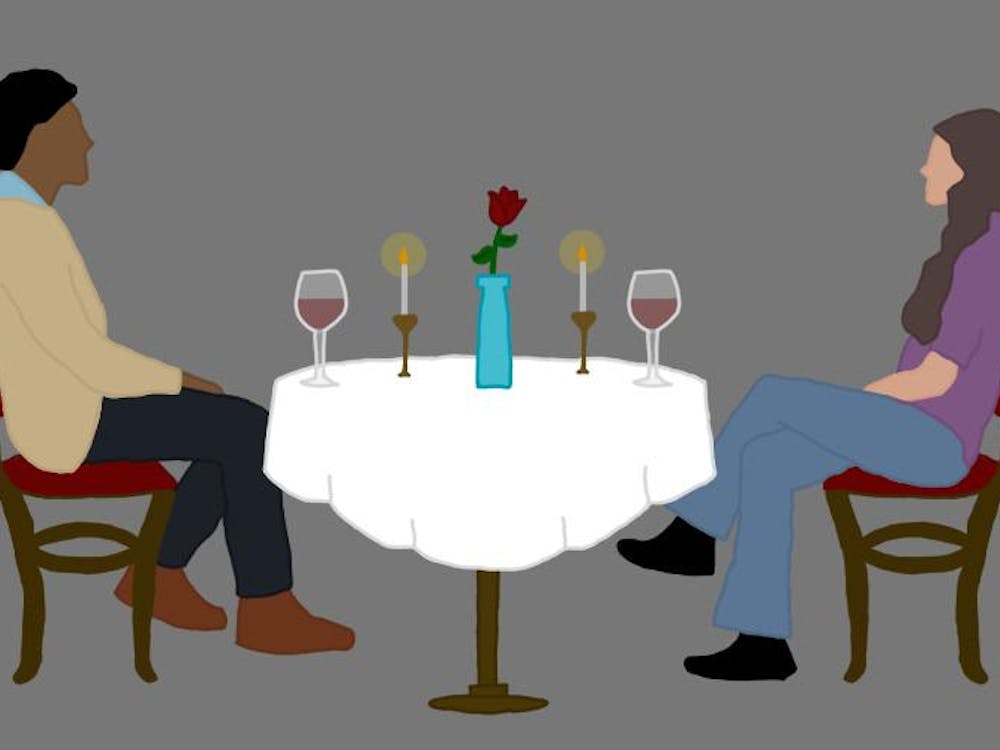When Physics Prof. Lou Bloomfield first started teaching his now-famous physics course, "How Things Work," the expectations were low. "The other professors told me, 'Go ahead, you'll get 20 students,'" he recalled.
There wasn't much reason to be hopeful, either. Before 1991, the first year the course was taught, "nobody even knew where the physics building was unless they had to," Bloomfield said. Seventeen years later, however, the course is one of the physics department's most popular, inspiring Bloomfield to write two books based on the idea and leading the Discovery Channel to make him co-host of the series "Some Assembly Required."
Bloomfield's hope for the class was simple: to give students an understanding of the elements of their everyday life. He said many people do not have the necessary tools to understand the world.
"Airplanes are a great example ... very few people really know how they fly," he said. "I'd read textbooks, I'd talk to the experts and they wouldn't know ... they could tell you what to do to make one fly, but they couldn't tell you why."
So Bloomfield stepped up to the task of equipping University students with this knowledge, using demonstrations and real-world examples. He also made an effort to interact with students personally.
Second-year College student Jen Christensen remembers her time at Hereford College very fondly, the student residential area where Bloomfield was the principal through last year.
"He and his family lived there, and they were all great," she said. "We all loved them." Through his desserts and "Grey's Anatomy" viewing parties, it was clear that he put in the effort to get to know students, she added.
Bloomfield's welcoming charisma extended into the classroom, and the new class quickly became a hit. In its first semester, 92 students registered, Bloomfield said, noting that his record of teaching graduate-level courses had left him with none of the name recognition he has today. He mused that the name of the course was a big draw, saying, "I take no credit for coming up with it. Plenty of people have used it for courses like this in the past ... but nobody had really stuck with it."
The next semester, 200 students signed up, the next, 500. The class continued to grow until it was filling several classrooms, and Bloomfield was forced to perform his demonstrations with a video link between the classrooms. Managing the class was a daunting task -- Bloomfield called the effort "heroic and insane," adding that "it certainly took a toll on my hair."
Though the class is now restricted to 200 students and is currently taught by another professor, the demonstrations continue to attract attention. As Bloomfield described it, he would cover a topic like thermodynamics in the same week as another course, "but while they're going over calculations, I'll be showing my class an air conditioner." One of his favorite demonstrations involves microwaving metal.
"You're told all your life not to put metal in a microwave ... but microwaves are made of metal," Bloomfield explained. "It's a big metal box. Some even have metal racks inside." As it turns out, it's only thin or sharp metal -- notably, kitchen staples like aluminum foil and twist-ties -- that are hazardous. The radiation pushes charge in the metal "two and a half billion times a second," he said, and if "the metal is too thin, it'll heat up ... after a while, it'll spark."
Bloomfield, never satisfied with just the explanation, was quick to spark students' interest by microwaving compact disks for his class. The class was treated to colorful fireworks and hopefully learned a little more about the inner workings of another everyday object.
Occasionally, to continue his hands-on style, Bloomfield had to develop his own resources to continue teaching the class. Originally, he had wanted to use David Macaulay's popular book "The Way Things Work" as a text. But he said he found that it lacked enough real science, so he wrote his own textbook, "How Things Work: The Physics of Everyday Life."
When Grounds was wired to the Internet, Bloomfield also created a Web site to post answers to students' physics questions. Before long, Bloomfield said, he was receiving questions from around the world and answering them would take all weekend. And then one day, as Bloomfield put it, "I was thirty thousand questions behind."
After that realization, he rarely found himself updating the Web site. He noted, however, "every so often, a really good one sneaks through, and I've just got to answer it."
A common theme among many of the questions is his favorite demo: the microwave.
"People are terrified of microwaves," he said. "Nobody really understands how they work." Through the Web site, he said he has been able to dispute myths such as the belief that close contact with microwaves will cause cancer.
Today, Bloomfield's audience extends far beyond the classroom, where he now teaches graduate level courses, and online forum. Half Yard Productions, a Bethesda, Md. studio, pitched a show to the Discovery Channel that would detail how everyday objects are made. When they held auditions to host the show, called "Some Assembly Required," a former "How Things Work" student tried out for the role. He didn't get the part, but he did mention Professor Bloomfield to the studio. In October 2006, the show's producer called him to ask if he was interested. Soon after, he was shooting an audition tape at the Stihl chainsaw factory.
Bloomfield described his role on the show as a "pop-up science guy" who explains the nitty-gritty of the manufacturing process with his co-host, Brian Unger, formerly of "The Daily Show." Bloomfield said it is difficult both being a professor and a television show host, but added that he had a great time making the show.
"One great part was just talking to the engineers," he said. "Sometimes they'd have forgotten how excited they were when they first got the jobs. Before long they'd be getting into it again."
Over the course of the one-season series, Bloomfield assembled everything from moon bounces to Steinway pianos. He has taken home a custom-fitted bowling ball and may have accidentally stolen the neck of a Gibson guitar. Though the series has concluded, Bloomfield relishes the experience and his souvenirs.
One thing Bloomfield is not doing, however, is slowing down. Other than writing another book, he's also invented a new material to solve a very specific problem: wobbly tables.
"It's hard if you poke it quickly, but it molds to different shapes over time," he said, demonstrating a sample.
Bloomfield noted that he also is concerned about the future of the "why" behind physics that he has worked so hard to explain. He said people working on location for "Some Assembly Required," would say, "When we outsource this work, we're not just outsourcing the task; we're outsourcing the expertise ... Today, it's easy to own a company and make a lot of money without knowing -- or even caring -- what it is you're doing."
Bloomfield said he hopes the class he developed and others like it can help reverse the trend. Many pop science books and TV shows "say they explain something, but they're really just entertainment," he said. "The people that make TV shows think that if you're watching TV, you don't want to think. Well, I'm making them think"






